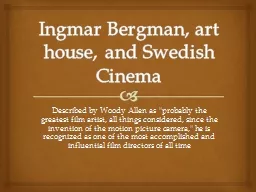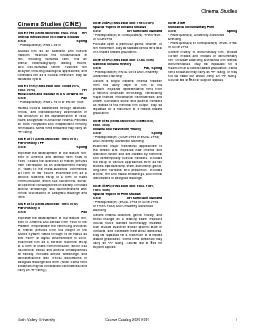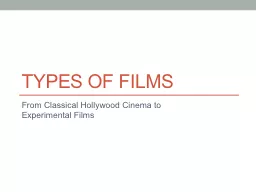PPT-Ingmar Bergman, art house, and Swedish Cinema
Author : pasty-toler | Published Date : 2016-06-11
Described by Woody Allen as probably the greatest film artist all things considered since the invention of the motion picture camera he is recognized as one of the
Presentation Embed Code
Download Presentation
Download Presentation The PPT/PDF document "Ingmar Bergman, art house, and Swedish C..." is the property of its rightful owner. Permission is granted to download and print the materials on this website for personal, non-commercial use only, and to display it on your personal computer provided you do not modify the materials and that you retain all copyright notices contained in the materials. By downloading content from our website, you accept the terms of this agreement.
Ingmar Bergman, art house, and Swedish Cinema: Transcript
Download Rules Of Document
"Ingmar Bergman, art house, and Swedish Cinema"The content belongs to its owner. You may download and print it for personal use, without modification, and keep all copyright notices. By downloading, you agree to these terms.
Related Documents














